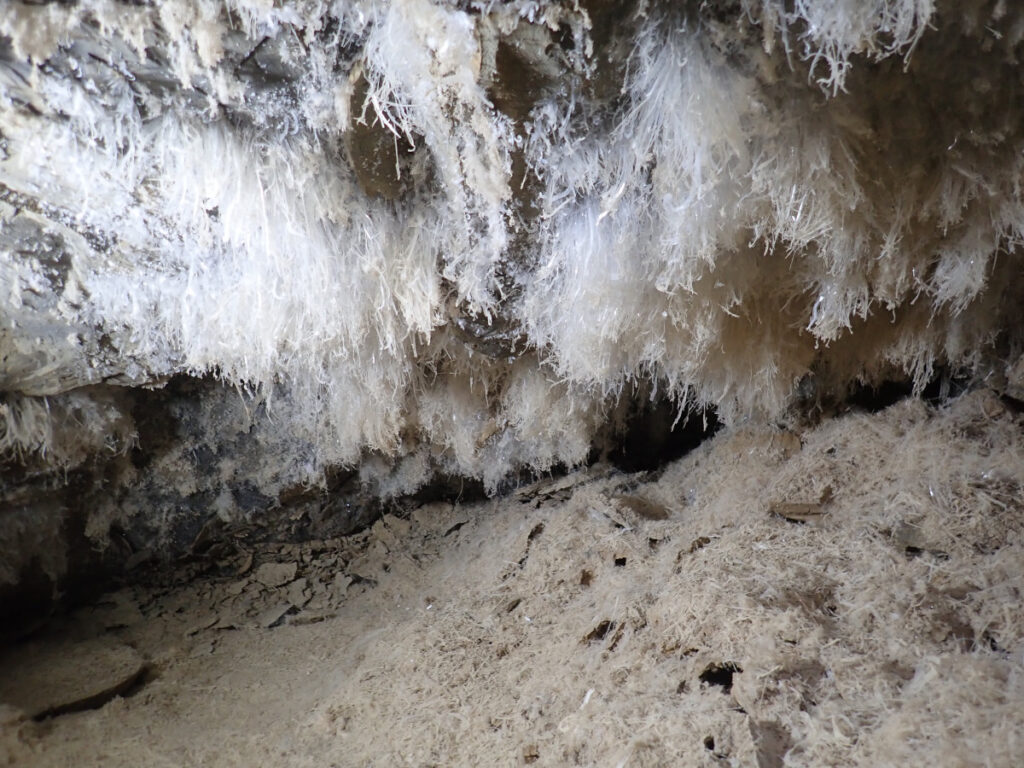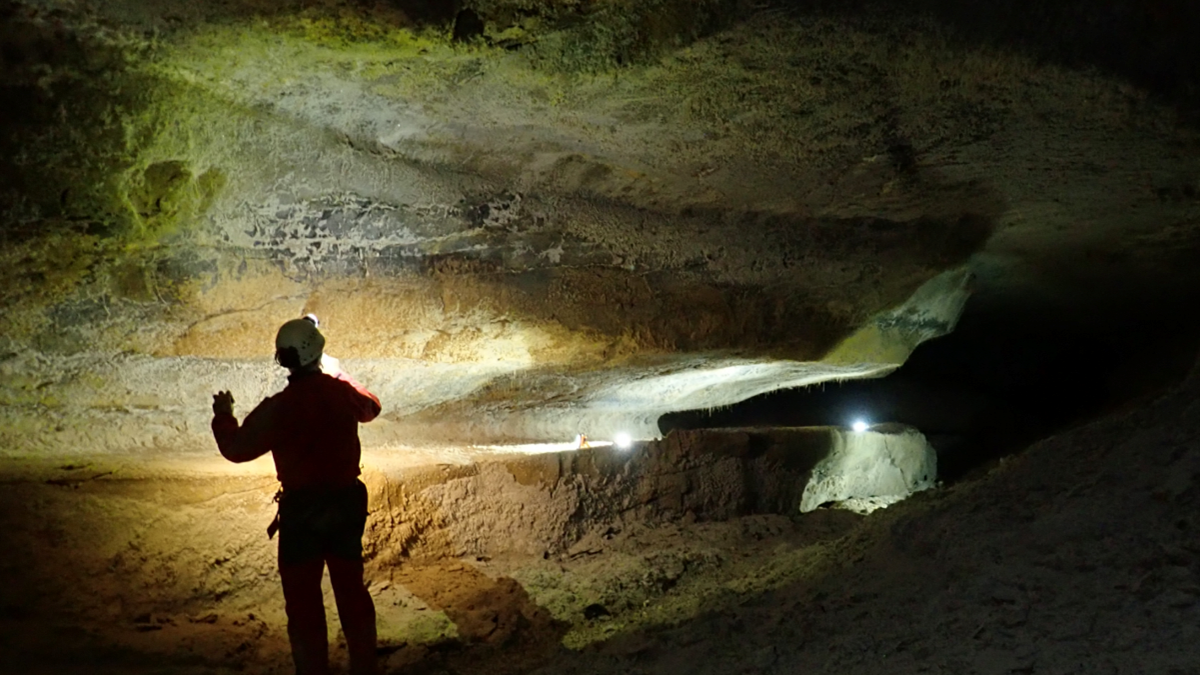The first thing you’ll notice when entering ScrouitchGallery, 100 meters below the French Pyrenees, is the sound of your shoes. Crystals blanket the floor, and each footstep causes a squishing sound, giving the gallery its name: scrouitch, scrouitch, scrouitch.
Wind rustles a group of scientists as they crouch down to examine the sparkling crystals. Gypsum crusts coat the walls like frost, and mirabilite crystals as long as garden snakes fan out from the floor below. The scientists gingerly place mineral fragments into plastic bags and tubes set for the laboratory. They hope to unlock the history of this gallery—and reveal the secrets of sulfuric acid caves around the world.

Nébélé cave, which stretches for tens of kilometers under the meadows of the Arbailles massif in France, was thought to be carved by acid produced by microbial life. But a group of researchers discovered that chemical reactions inside the limestone produced the acid that formed the cave.
The finding, published in Geology, came from the first multi-isotope analysis that pinpointed just how much microscopic organisms versus natural chemical reactions contribute to sulfuric acid cave formation.
The research has applications for oil and gas drilling operations, said Eric Gaucher, a geochemist at the University of Bern and a member of the research team. Large, deep caves like Nébélé are a hazard for borehole drilling, and understanding how they form helps drillers identify risks at other locations.
No Coca-Cola Here
“You can drink Coca-Cola, which has plenty of carbonic acid. But you cannot drink water with plenty of sulfuric acid.”
Caves typically form when acids from rainwater or decaying plants percolate through the ground soil, slowly dissolving rock. Sulfuric acid, the strongest of the acids, can sculpt large cave rooms in only a few thousand years, compared with carbonic acid, which takes many times longer. “You can drink Coca-Cola, which has plenty of carbonic acid,” said Gaucher. “But you cannot drink water with plenty of sulfuric acid.”
In caves, caustic sulfuric acid forms when water combines with hydrogen sulfide, a colorless gas that smells of rotten eggs. But scientists question whether the gas comes from biological or nonliving sources.
Microbes munching on organic matter deep underground produce energy by converting sulfate into sulfur. In the process, they release hydrogen sulfide gas, which reacts with oxygen in a cave’s chambers to form sulfuric acid.
Nonliving sources, on the other hand, come from chemical reactions deep underground. In the French Pyrenees, the researchers identified hydrogen sulfide gas that became trapped in pores and veins in the cave’s limestone 65 million years ago underneath the foothills of the northern Pyrenees. Oxygen carried by water traveling through cracks and pores in the limestone reacted with the gas, forming sulfuric acid.

Tracing Sulfur to Its Source
The researchers ventured into two caves, Nébélé and Azaleguy, in search of chemical fingerprints of biologic and nonliving processes. After exploring ScrouitchGallery, they ventured through the tunnel’s twists and turns, taking samples along the way.
In all, the team collected samples from intricate gypsum stalactites, the “flower” mineral thénardite, spring water, and the cave’s limestone walls. They noted geomorphic features within the caves, such as abandoned stream channels and keyhole geometry—when a cave’s passageway resembles the outline of a keyhole.
Back in the lab, the group measured the ratios of different sulfur, oxygen, and strontium isotopes in the samples. Sulfur has four stable isotopes, and microbes tend to metabolize the sulfur isotope with the lightest molecular weight (32S) because it uses the least amount of energy. Therefore, sulfuric acid from microbes has a higher abundance of 32S compared with sulfuric acid from nonliving sources. Using relationships between multiple isotopes, the team discovered that 41% of sulfur came from abiotic sources and 59% came from biotic sources.
A Novel Approach Going Forward
The researchers’ “application of multiple sulfur isotopes, in addition to strontium and oxygen isotopes, succeeds in discriminating and quantifying the influence of two major sources of H2S [hydrogen sulfide] in this system,” said geochemist Marjan Temovski with the Institute for Nuclear Research at the Hungarian Academy of Sciences, who wasn’t involved in the research. He said he hoped more samples would be collected at the same location in the future to rule out the possibility that local isotopic effects during the chemical reactions of hydrogen sulfide interfered with the results.
Geomorphologist Jo Hilaire Agnes De Waele with the University of Bologna called the methods “robust” and the study both innovative and provocative.
“It would be nice to test [the team’s] findings in other typical sulfuric acid caves.”
“Are many other limestones and dolostones in the world rich in these trapped hydrogen sulfide gases?” De Waele asked. “It would be nice to test [the team’s] findings in other typical sulfuric acid caves.”
Some sulfur isotopic ratios in the latest work were similar to ratios from other studies of sulfuric acid caves, raising the question of whether other caves are also formed by nonliving processes. Applying the same tests to La Verna cave, one of the biggest in Europe, and the United States’ Carlsbad Caverns in New Mexico may also be fruitful, said Gaucher.
—Jenessa Duncombe (@jrdscience), Staff Writer

